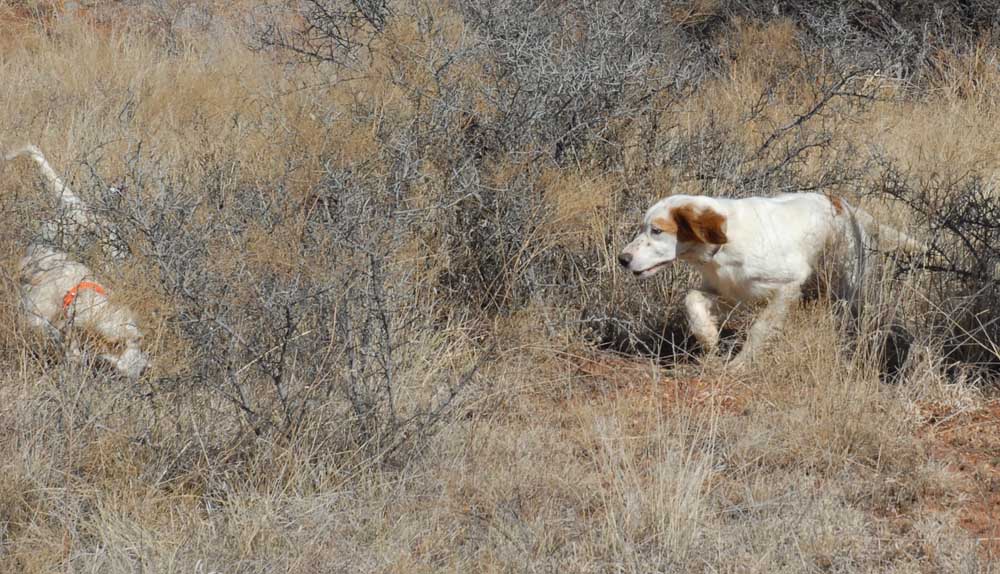The Birds: Quail, duck seasons show promise once winter finally arrives
Published 8:30 am Friday, November 1, 2024

- Quail hunters in the Rolling Plains and South Texas should expect the best bird numbers in years with a population rebound. (Steve Knight/Tyler Morning Telegraph)
Texas has two major fall/winter bird hunting seasons, quail and waterfowl, and while both are either completely or partially open, experienced hunters know it is still weeks and a lot of cold weather before the action peaks.
For quail hunters the cold is needed to kill summer vegetation for improved dog work. For duck hunters it is needed to spur a full migration.
Trending
Bird hunting ranks a distant second to white-tailed deer hunting in Texas, but that is not to say it is not important to those who participate, as well as the economy in the areas they hunt.
The problem is, unlike deer hunting, both types of bird hunting can be time consuming and costly because of the specialized equipment and dogs often required. However, coming with the effort and cost is a passion that can be unlike any other hunting activity.
Texas quail hunting has taken a hit in recent decades as quail numbers statewide have dropped and have been unable to sustain a long-term comeback. Last year an estimated 33,500 quail hunters took approximately 407,000 birds statewide.
“We had approximately 260,000 hunters and harvested about 7.8 million birds in 1987-88. In the boom of 2016-17, we had about 91,000 hunters and harvested approximately 1.9 million birds.This is related to the distribution of birds, changing human demographics, urban migration, competing interests, access and opportunity, and shifting value sets of our younger generations,” said John McLaughlin, Texas Parks and Wildlife Department upland game bird program leader.
According to surveys Texas quail have been declining at a rate of about 3 percent annually since 1966. The biggest bobwhite declines have been in the Cross Timbers and eastern Rolling Plains, while scaled quail numbers have dropped most in South Texas.
Because of more dry years than wet during that time, short-lived quail have been unable to build numbers back up. During the occasional wet years brood numbers have often been down and consisted of less-productive older birds.
Trending
At the same time habitat declines during the drought years.
“The better the habitat, the more likely you are to be able to take advantage of the rains when they come. Which is to say if you don’t take care of your habitat in the lean times, you won’t maximize production during those periods of recovery. You need about three years of good rainfall and production to have the potential for a boom. So, for a landowner, protecting grass cover when it’s most vulnerable, controlling brush species that are using limited water resources, burning, spraying, etc., are all things landowners can regularly do to ensure their populations are primed when the rains come. The lower the populations to start, the more uplift you need to kick start reproduction,” McLaughlin said.
This year quail hunters are looking at a rare population upswing.
“As we enter the fall it’s clear that there has been a significant increase in bird numbers across Texas, with bobwhites observed on greater than 50 percent of all survey routes this August. We expect ample opportunity for hunters in comparison to previous years,” McLaughlin said.
Those surveys, which do not show actual numbers, but trends, indicate the Rolling Plains bobwhite population is five times better than it was last year and about a third better than the long-term average.
South Texas bobwhite numbers showed to be like 2023, but anecdotal reports are that this year could be much better.
Scaled or blue quail numbers are also good this year with the biggest increases coming in regions like the Edwards Plateau, High Plains and to a lesser degree, the Rolling Plains.
The Trans-Pecos region is the best-known for scaled quail, and numbers there remain above the 15-year average despite a dry year.
Texas quail numbers are tied to habitat and rainfall.
“While habitat is the main driver of long-term population trends, annual weather patterns dictate yearly fluctuations.Unsurprisingly the two are interconnected. As the state has eased out of drought conditions, the habitat has followed, and quail have clearly been amongst the beneficiaries,”McLaughlin said.
The statewide quail season opened Oct. 26 and continues through Feb. 23.
Texas duck hunters are looking at a unique situation. Duck numbers are up, but thanks to a late summer dry stretch available water in the state at present is limited. A late ending to summer has also delayed migration which could mean a slow season start.
“While things can change rapidly, we remain optimistic that this warm weather pattern will shift, bringing timely cold fronts and significant rain events. I expect an above-average duck season, though it may start slowly due to the late migration of larger duck species still lingering up north,”said Kevin Kraai, TPWD waterfowl program leader.
U.S. Fish and Wildlife Service’s May Waterfowl Breeding Population and Habitat Survey shows overall duck numbers up five percent from last year. That includes an eight percent jump in mallards, 55 percent increase in wigeon and a 20 percent climb in green-winged teal.
Like quail, waterfowl hunter numbers have been declining. After dropping to 55,000 hunters in 2009, numbers climbed to more than 100,000 during the 2014 and 2015 seasons, but fell back to about 77,000 last year.
Unlike quail, ducks are found statewide, but about 55 percent of all duck hunting in Texas is along the Gulf Coast.
“There is a ton of issues facing waterfowl and waterfowl hunting. Most of which is in the form of habitat loss both in the breeding grounds and the wintering grounds. We are losing grasslands nesting cover at an alarming rate. Wetland drainage for purposes of more land to farm is rampant in the US and Canada,” Kraai said.
The biologist added that the loss of habitat in the state’s three major waterfowl regions, East Texas, Gulf Coast and Playa Lakes Region, is unprecedented.
“Bottomlands clear cut or flooded, coastal marshes sinking or turning completely saline, playa wetlands silting in and disappearing. Duck and goose populations have been declining continentally for over a decade, in large part to these things. Drought hasn’t helped either,” Kraai explained.
The regular duck season in the High Plains Mallard Management Unit opened Oct. 26, Nov. 2 in the South Zone and Nov. 9 in the North Zone.







